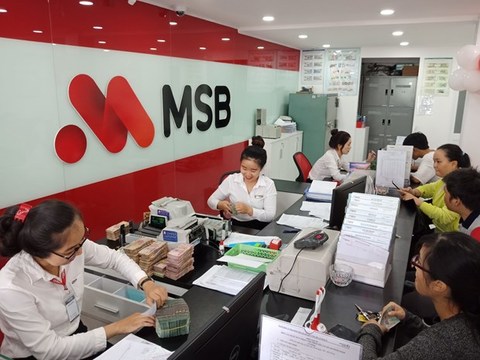Credit demand set to grow in the final half of 2022
Credit demand set to grow in the final half of 2022
In the last half of 2022, banks may ease loan conditions so that more customers could access credit, given the positive economic outlook and their improving financial capacity.
Credit demand in the economy is set to keep growing during the last half of 2022 in all economic sectors.

A customer at a Vietcombank's branch in Hanoi. Photo: Cong Hung |
The finding was revealed during a survey conducted by the Forecast and Statistics Department under the State Bank of Vietnam (SBV) in June on the credit situation at local banks.
During the first six months of 2022, Vietnam’s credit growth expanded by 9.35% year-on-year, significantly higher than the 6.47% rate recorded for the same period of last year.
This resulted in a total outstanding loan of VND11,400 trillion (US$487.32 billion).
According to the SBV, the majority of banks maintained their view of a higher credit growth as stated in the previous survey, in which credit demand from businesses would be higher than individual customers; demand for short-term credit equivalent to demand for mid- and long-term ones; and the need for VND-denominated loans higher than foreign currency-denominated loans.
The SBV also noted consumer credit is expected to expand at highest among others, followed by credit for trade, services, construction, and industrial development.
Meanwhile, banks suggested credit for agro-forestry-fishery development would be the lowest.
This year, the SBV sets a credit growth target of 14%, around the same level of last year, but noted it reviews the respective credit quota for each bank based on their operation situation and finance capacity.
A 14% credit growth would mean only VND500 trillion ($21.3 billion) would be disbursed for the remainder of the year, lower than the VND1,000 trillion ($42.7 billion) injected into the economy during the first half of 2022.
The SBV noted it would continue to encourage credit into priority economic fields and individual customers and tighten loans to risky sectors such as securities, real estate, or insurance.
For the last half of 2022, the survey forecast banks may ease loan conditions so that more customers could have access to credit.
“This comes as the banking sector holds an optimistic outlook on the macro-economic situation, their improving financial capacity, and the vision of the Government to support socio-economic recovery,” noted the report.
A report from SSI Securities Corporation estimated the average profit growth of Vietnamese banks during the last six months at 26-29% year-on-year, thanks to high credit growth and improving net interest margin (NIM).
SSI expected the main drivers for credit growth during the last half of 2022 would come from long-term loans in the fields of infrastructure development, manufacturing, education, healthcare, and electricity transmission.
The securities company forecast Vietnam’s credit growth in 2023 to slow down compared to 2022 and return to the pre-Covid-19 level of 13%.
While consumer credit may decline due to low consumer demand, the situation would be different for businesses in manufacturing, production, and infrastructure, as over VND1,200 trillion ($51.3 billion) would be channeled into the economy via the Government’s 2%- interest rate subsidy scheme for the 2022-2023 period.




















